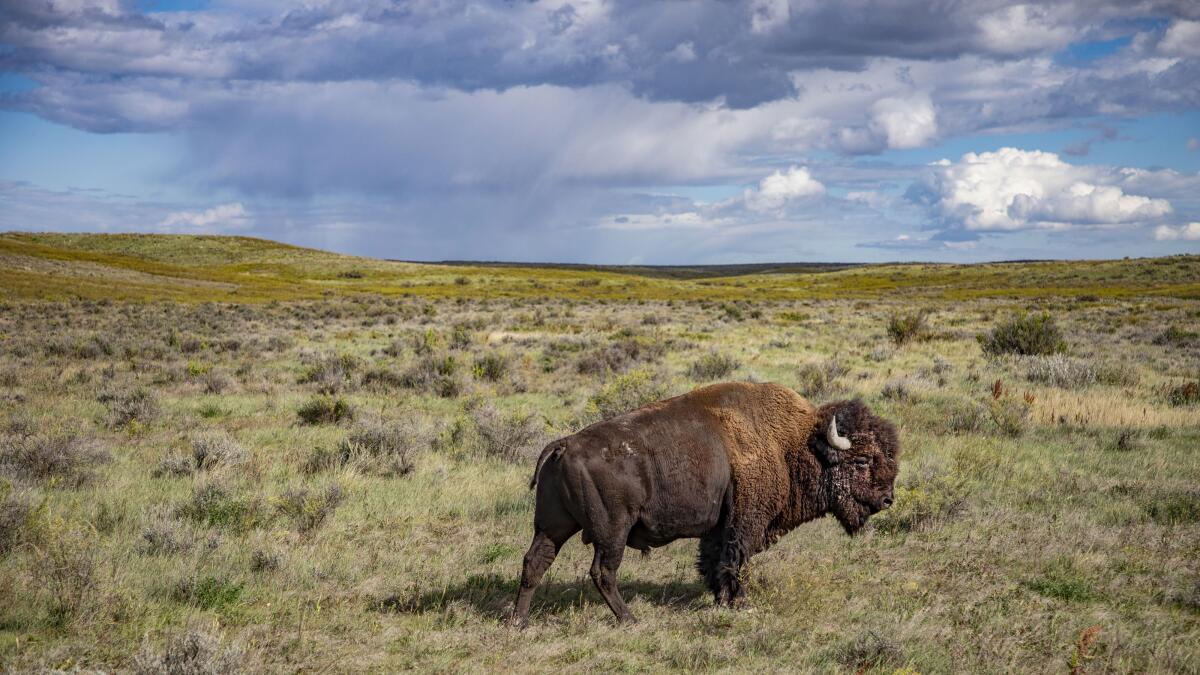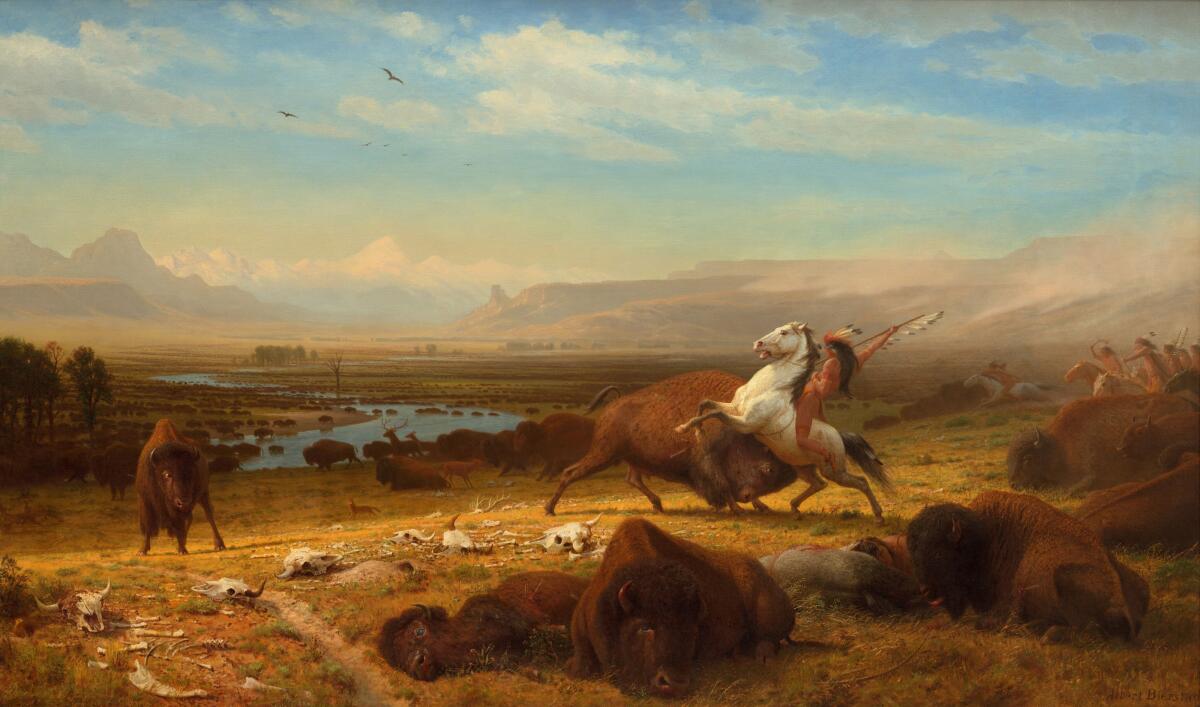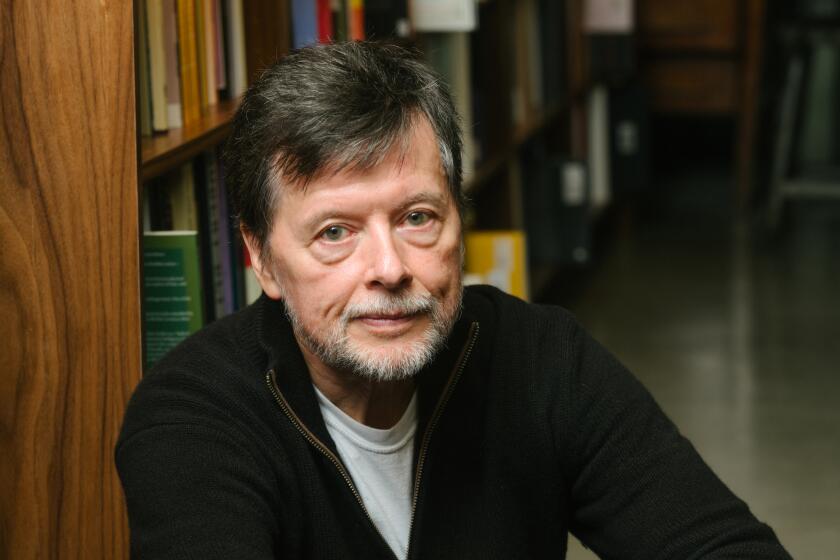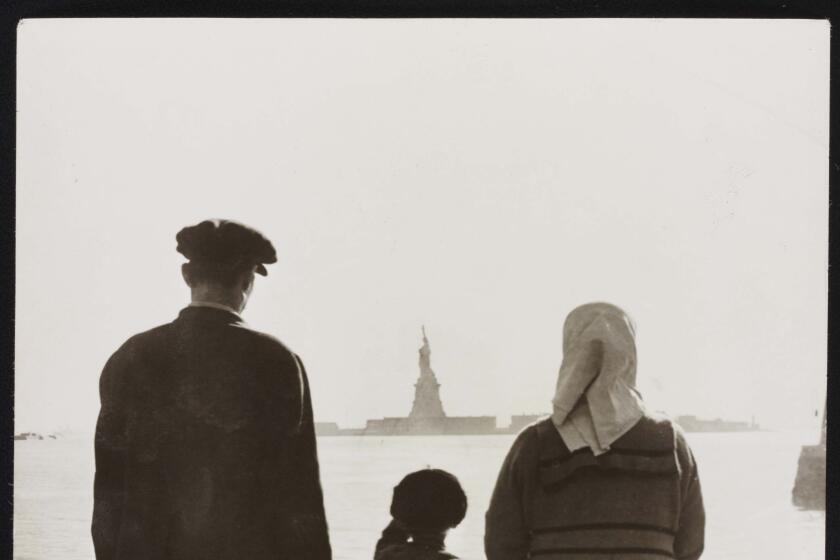‘The American Buffalo’ is a spiritual step forward for Ken Burns

- Share via
Ken Burns, American director of big multi-part documentaries on big American subjects, is back Monday with “The American Buffalo” on PBS. As history is the thing we need to learn from so as not to repeat it, or learn to repeat the good parts, even Burns’ relatively lighthearted works, like “Baseball” and “Jazz,” “Benjamin Franklin” or “Mark Twain” have some contemporary relevance.
But following last year’s “The U.S. and the Holocaust,” “The American Buffalo” — another story of genocide, and of survival — reads as especially urgent and of-the-moment, to the degree that his laconic house style can express urgency. It’s as if the director had entered some late-career, late-life period, driven by the shortness of time, his, ours and the planet’s. Like all Burns films, it’s not without hope or heroes: If the race is slow to change, individuals — and he likes to build the larger story around individual actors — are capable of epiphany, and some of them will be in a position to Get Things Done. (He returns here to a favorite theme: the need for intelligent legislation in the face of human shortsightedness.)
The title notwithstanding, it isn’t a nature documentary — we do learn some facts about our national mammal (it’s official), taxonomical name Bison bison. It is big, in fact the largest land animal in the Western Hemisphere; it is fast — running away is its survival strategy, achieving speeds of 35 miles an hour (“a souped-up hot rod of an animal hiding in a minivan shell”), and calves can move with the herd within seven minutes of birth. The “buffalo wallows” it creates by rolling in the dust catch rain and nourish the landscape. There is some natural-world overlap with Burns’ ”The National Parks,” but that the documentary looks at human activity through the lens of a different species feels like something new for the director, enlarging, a kind of spiritual step forward — indeed, as its Native American subjects and commentators were and are concerned, it is primarily a spiritual story.
Ken Burns’ new PBS documentary “The American Buffalo,” premiering Monday, tells the story of how our national mammal was on the brink of extinction until humans evolved and saved them.
Before the herds were reduced to near extinction, bison roamed far and wide across the continent, from the Rocky Mountains to Lake Erie to Florida, numbering in the tens of millions. They co-evolved with Indigenous people over tens of thousands of years, and for some tribes were the basis of their existence, providing food and the materials from which they made clothing and shelter and figuring in their religious ceremonies; as such, they were respected. “We are friends, we are brothers, we are related,” says N. Scott Momaday, a Pulitzer Prize-winning Kiowa novelist and essayist — “not standing apart, but part of the ecology of all living things,” in the words of historian Dan Flores.

“The story of American bison really is two different stories,” says Rosalyn LaPier, a Native American ethnobotanist. “It really is a story of Indigenous people and their relation with the bison for thousands of years, and then enter not just the Europeans, but the Americans, and that’s a completely different story, and that really is a story of utter destruction.”
Each of its two two-hour episodes tells a different story as well: the first concerns the near-annihilation of the species, and the second its (ongoing) restoration, a process that has progressed in fits and starts over a century and a quarter, thanks to a combination of private and public interests. If the second half is hopeful — we have the reassuring sight of herds running free in wild landscapes — the first is a difficult watch, if the sight of rotting carcasses, mountains of skulls and decapitated animal heads — animals killed, by white men, for money, fun or out of a pathological expression of masculinity — disturbs you at all. (The Indians used every bit of a buffalo.)
Filmmaker Ken Burns’ latest documentary series, ‘The U.S. and the Holocaust,’ draws parallels to the recent rise in American nationalism and antisemitism.
No less discomfiting is the twinned, not even metaphorical story, of how European American’s quest for property and profit drove Native peoples from their lands, and then ate away at the lands they’d been driven from. Whether as byproduct or policy, decimation of the buffalo was closely linked to control of the Indians — the government wanted to turn them into farmers — and its attempts, if not to eradicate then to deracinate the race. “I would not seriously regret the total disappearance of the buffalo from our western prairies, in its effect upon the Indians,” said Columbus Delano, secretary of the interior under President Ulysses S. Grant, “regarding it as a means of hastening their sense of dependence upon the products of the soil and their own labors.”
As ever: Peter Coyote narrates, title cards set off chapters, learned and concerned commentators weigh in, while actors read the testimony of witnesses long gone. The progress is determinedly chronological; dates introduce every new section. The visual record, in paintings, artifacts and photographs, is impressive. The larger story is told through individual ones, which have a tendency to intertwine in dramatically satisfying ways.

Among the characters here are Buffalo Bill Cody, who shot buffalo to feed railroad crews, later parlaying it into a show business career; the Hunkpapa Lakota leader Sitting Bull — a buffalo name — who saw in the loss of the bison “a death wind for my people” and would spend four months in Cody’s Wild West show before tiring of white ways; Quanah Parker, a Comanche war leader, who would become a successful rancher and government liaison, and his eventual friend Charlie Goodnight, a former Indian hunter who, at his wife Molly’s inspiration, would help ensure the buffalo’s survival; the Smithsonian taxidermist and future creator of the Bronx Zoo, William Temple Hornaday, whose interest progressed from dead buffaloes to live ones, and from herds in captivity to populations in the wild; and George Bird Grinnell, paleontologist, publisher and friend both to the Pawnee and to Teddy Roosevelt, whom he helped turn into a conservationist.
Most of us, I am guessing, or projecting, give little thought to the buffalo. You might have the hazy impression that they were almost gone but are not all gone; it is possible you’ve thought to yourself, as people do when given an opportunity not to think further, “Everything’s fine.” Still, the issues at the bottom of “The American Buffalo” are still very much alive, as we race headlong into ecological disaster, propelled by our thirst for convenience, our addiction to fads and fashions, gadgets and gizmos — and the capitalist system that satisfies them — with little to no thought as to the cost as to the means of their production or the effect on the Earth.
“The lesson to be learned in that is that we cannot as human beings afford to do that to our relatives, the animals,” says Gerard Baker, former superintendent of Mount Rushmore and Little Bighorn Battlefield Monument and the highest-ranking American Indian in National Park Service history, who also was featured in Burns’ “The National Parks” and “Lewis and Clark” documentaries. “And when you look at a buffalo, you don’t just see a big shaggy beast standing there — you see life, you see existence, you see hope, you see prayer, and you see the future for your young, the future for those not yet born.”
More to Read
The complete guide to home viewing
Get Screen Gab for everything about the TV shows and streaming movies everyone’s talking about.
You may occasionally receive promotional content from the Los Angeles Times.









